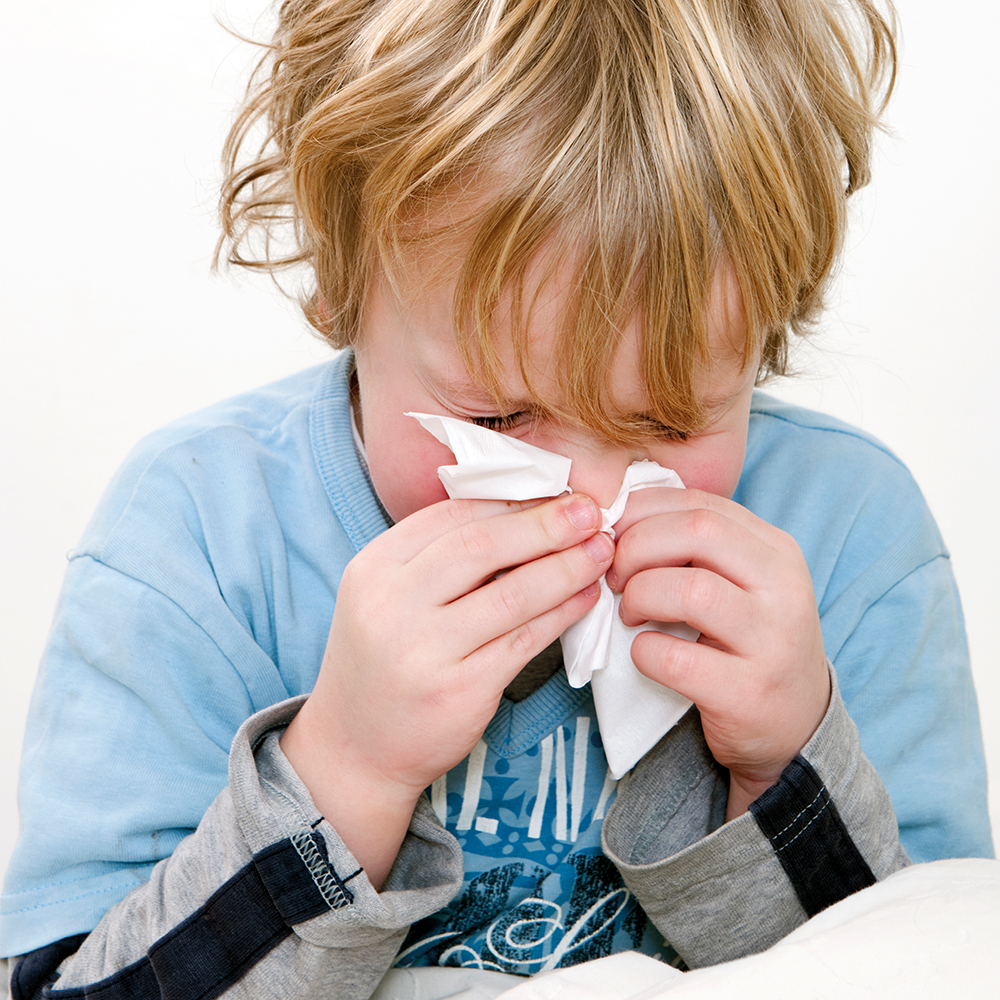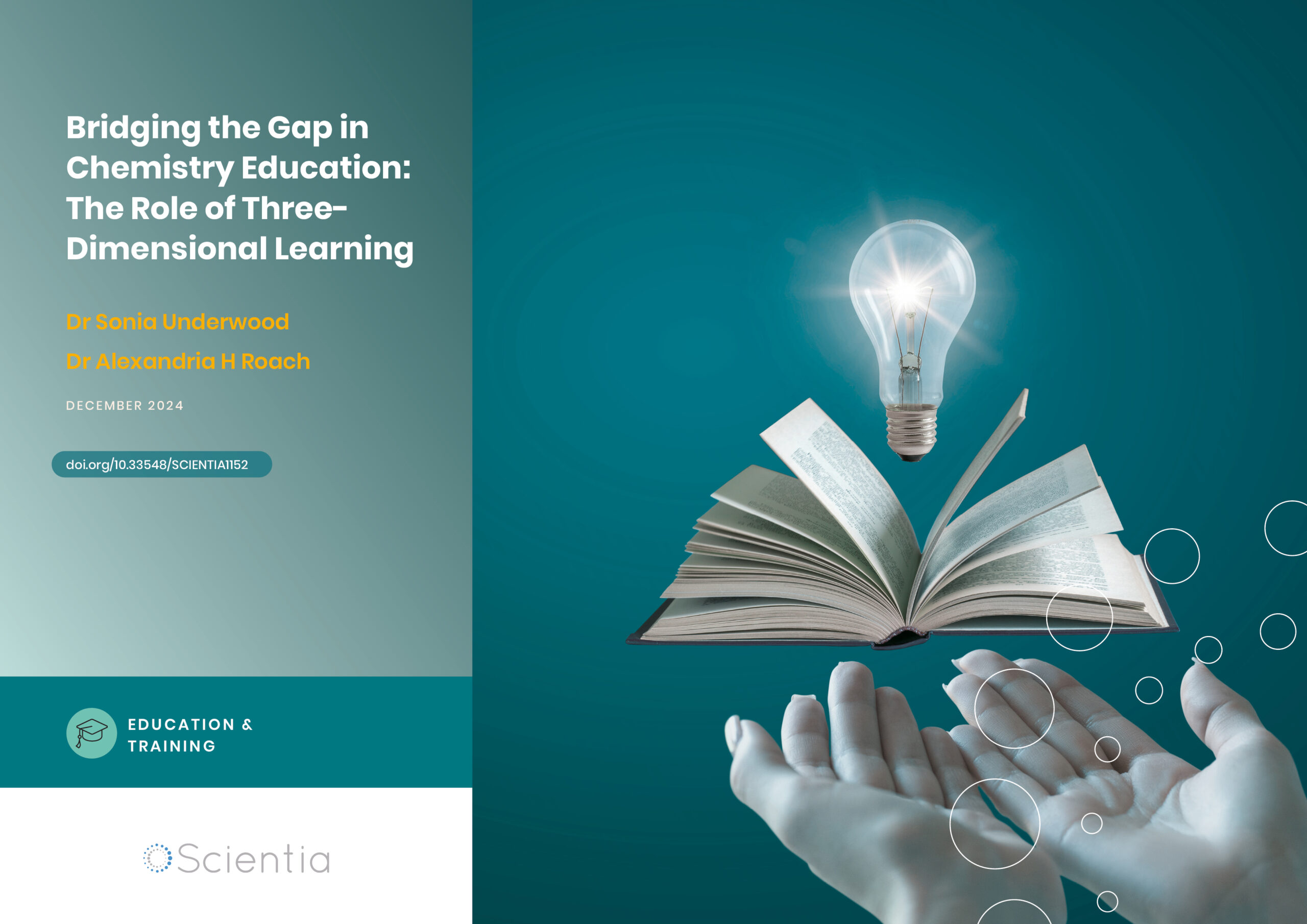Dr Amy Schmidt – iAMResponsibleTM: Educating Food Producers & Consumers About Antimicrobial Resistance
Antimicrobial resistance (AMR), the acquired ability of microorganisms to withstand the effects of medications used to treat them, is a serious and growing threat to public health. In collaboration with experts from various US institutions, Dr Amy Schmidt at the University of Nebraska-Lincoln has developed a program called the iAMResponsibleTM Project, aimed at educating consumers, agricultural producers and others on the risks associated with AMR, as well as strategies to mitigate these risks.
Antimicrobial Resistance
After the introduction of antibiotics in the early 20th century, most infections caused by bacteria became easily treatable. However, the effectiveness of antimicrobial medications can no longer be taken for granted, due to the rise of a phenomenon known as antimicrobial resistance (AMR).
AMR occurs when microorganisms, such as bacteria, viruses, fungi and parasites, become immune to the effects of antibiotics, antivirals, antifungals, and other medications used to cure infections. Microorganisms that have become resistant to antimicrobial medications, often referred to as ‘superbugs’, can be very dangerous.
This is because when a pathogen causing an infection becomes resistant to common treatment strategies, the infection becomes very difficult, if not impossible, to cure. Infections that are typically curable can then become life threatening and even spread across entire populations, causing widespread morbidity and mortality.
Over the past decade or so, AMR infections have been rising at an alarming rate. In the US alone, these infections are now the cause of approximately 23,000 deaths every year; worldwide, at least 700,000 die each year of drug resistance in illnesses, and this number is expected to rise to over 10 million by the middle of the century.
Researchers have identified ways in which AMR infections are commonly transferred among humans, as well as specific activities that can contribute to their proliferation. Humans can also contract AMR infections from contaminated foods.
Educating people about AMR, its risks, and how to mitigate its impact, is a crucial first step in trying to prevent the proliferation of these infections. With this in mind, experts from multiple US institutions have been collaborating on a project called iAMResponsibleTM, aimed at increasing people’s understanding of AMR, while also encouraging them to take action in order to mitigate its risks. The project is led by Dr Amy Schmidt, an associate professor at the University of Nebraska-Lincoln who has been researching AMR for several years.

iAMResponsibleTM
The iAMResponsibleTM Project is a nationwide outreach initiative aimed at conducting research into AMR and disseminating reliable information about its underlying mechanisms, its risks, and how to diminish its impact. Dr Schmidt started working on the project in 2017, with the goal of establishing a mechanism to continuously share information with consumers and producers that would improve their understanding of AMR.
‘Efforts like ours are intended to affect knowledge about AMR, what it is, how it occurs, what actions have an impact on it, motivating individuals to adopt practices that ultimately help reduce the incidences of AMR infections and preserve the efficacy of antibiotics and other antimicrobials for continued use,’ says Dr Schmidt. Dr Schmidt’s hope is that the iAMResponsibleTM platform will become a reference for individuals and organisations seeking research-based information about AMR.
The project’s key goals are summarised in the tagline ‘Understand. Adapt. Preserve.’, which entails that in order to tackle AMR, one has to understand what it is and why it is concerning, change behaviour to minimise risks and preserve the efficacy of antibiotics for treating infections in the future.
The project involves a large network of collaborators from the University of Nebraska-Lincoln, the US Department of Agriculture, the University of Maryland, and other institutions. Dr Schmidt has been focusing on the outreach and extension aspect of the project, which is aimed at delivering reliable information about AMR to food producers, policymakers, medical professionals, and general members of the public.
‘We have branded our outreach effort as the iAMResponsibleTM Project to encompass the idea that everyone has some responsibility in reducing the growing health crisis caused by resistant organisms,’ says Dr Schmidt.
Outreach and Extension
One of the key achievements of the iAMResponsibleTM Project to date has been establishing a network of professionals across the US with expertise in various aspects of livestock production, crop production, food safety, and other areas affected by AMR. The findings gathered by these researchers are then shared on the project’s Twitter and Facebook accounts.
‘Our goal is to link any piece of information we share through social media or our website, which is currently under construction, to published, peer-reviewed research supporting it,’ Dr Schmidt explains. ‘This is extremely important to us, because so much information people share and receive these days is taken as fact without considering the evidence that may or may not exist to support it.’
Dr Schmidt and her colleagues believe that disseminating research-based information about AMR could increase people’s awareness and strengthen their knowledge, allowing them to make informed choices. For instance, a recent study released a few weeks ago shows that antibiotic resistance genes are not only transmitted from livestock or pets to humans, but also vice versa.
Study findings suggest that a poor quality control of medicines can be a further factor contributing to the rise of AMR infections. If a specific dose of medication prescribed to cure an infection is of sub-par quality, for instance, the treated bacteria could survive and potentially develop resistance to the drug.

Taking Action
A key part of the iAMResponsibleTM Project’s mission is to inform people about simple actions that can help mitigate the risks of AMR. For instance, research suggests that washing our hands frequently can reduce the risk of spreading AMR infections. ‘One of the simplest ways to reduce risk is to practice good hygiene,’ says Dr Schmidt. ‘Washing hands, covering sneezes and coughs, covering wounds while they are healing, can all reduce transmission of infectious germs.’
Further recommendations include washing fruits and vegetables well, keeping raw meats separate from cooked foods, and avoiding food that is at higher risk of carrying bacteria, such as raw meat, raw fish, and unwashed vegetables.
Another action that can help to mitigate the risks of AMR is learning when antibiotics are needed and when they are not. Interestingly, the World Health Organization reports that approximately 30% of antibiotic prescriptions written every year are unnecessary. This is concerning, as any interaction between bacteria and antibiotics generates conditions for the bacteria to become resistant to the medication used.
‘One example of taking an antibiotic incorrectly is when it is taken for a viral infection,’ Dr Schmidt explains. ‘Antibiotics do not work against viruses, so the antibiotic being introduced to the body is not treating the virus causing the infection, but is still interacting with bacteria in the body.’
When someone is prescribed antibiotics, it is also important for them to take the entire prescription as directed by the doctor. In fact, interrupting treatment before the bacteria have been eliminated can actually strengthen these bacteria and make them more resistant to that specific medication.
Another phenomenon contributing to AMR is the growing trend of self-medication with antibiotics. While many countries have laws that restrict antibiotic sales without a prescription, self-administration of antibiotics occurs in all countries. It is particularly concerning in those countries where the practice remains legal or poorly enforced. Internet vendors selling antibiotics without a prescription are numerous and many appear willing to sell their medications to clients in countries where this practice is forbidden. ‘Unnecessary dispensing of antimicrobials for both human and animal treatments needs to stop and new diagnostic tools that can help determine the most effective treatment for an infection are needed, as well as quality assurance of medications and regulations for antibiotic distribution, quality and use,’ she adds.
Using vaccinations to prevent infections that would otherwise be treated with antibiotics, such as tetanus and whooping cough, can also diminish interactions between bacteria and medications, thus reducing the chances of bacteria becoming resistant.
A final action that can mitigate the risks of AMR is practicing safe sex. Several sexually transmitted diseases (chlamydia, gonorrhoea and syphilis) are treated using antibiotics, and some of these bacteria have developed resistance to multiple drugs typically used to eliminate them. Having protected sex can reduce the risk of spreading superbugs associated with sexually transmitted diseases across entire populations, which can have serious consequences if left untreated.

Reducing AMR Infections
Reducing the proliferation of superbugs will most likely be a challenging endeavour, requiring action from all parts of society. However, projects such as the iAMResponsibleTM Project are a valuable first step in helping to strengthen awareness about this phenomenon and encourage the change necessary to address it.
Dr Schmidt explains that a further necessary action to tackle AMR will be the development of new antimicrobial medications or alternatives to antimicrobials. Methods to identify sources of new antibiotic compounds may need to improve as the process becomes more scientifically complex. Further, regulatory barriers to antibiotic development and testing through clinical trials appears to be a hinderance to scientific research. Perhaps most important are the economic barriers to new antibiotic development. With extensive research and clinical trial requirements, and the relatively low price of antibiotics compared to other life-saving drugs, it is sometimes financially infeasible for pharmaceutical companies to invest in antibiotic development. Again, this demonstrates the broad spectrum of contributors who share in the responsibility for addressing AMR.
Dr Schmidt and her colleagues are continuing to conduct research about AMR, while also disseminating their findings and trying to establish their platform as a recognised source of research-based information.
‘Whether research results are generated by the current teams with which I am working or by other researchers around the world, we are eager to share them through our project,’ says Dr Schmidt. ‘Often, scientific information circulated online is not based on peer-reviewed and published research, hence we are very focused on ensuring that we only share information that comes directly from scientific research.’
Dr Schmidt and her colleagues are also creating a university course that can be delivered at multiple institutions, which is designed to educate new generations about AMR. The course will be delivered for the first time in the spring of 2020, with students attending weekly web-based lectures delivered by experts from universities, government agencies and healthcare.
After completing the course, participants should be able to define AMR, its potential sources, and its risks. They should also know how to easily locate and critically review research-based resources about AMR, identify commonly used antimicrobials, and describe behavioural changes that can mitigate the rise of AMR infections.
Reference
https://doi.org/10.33548/SCIENTIA460
Meet the researcher

Dr Amy Schmidt
Biological Systems Engineering Department
Animal Science Department
University of Nebraska-Lincoln
Lincoln, NE
USA
Dr Amy Schmidt is an associate professor at the University of Nebraska-Lincoln (UNL) where she has been a faculty member since 2012. She holds a BS and MS in Agricultural Engineering from Iowa State University, as well as a PhD in Biological Engineering from Mississippi State University. Before she started working at UNL, Dr Schmidt was first an extension faculty member at the University of Missouri-Columbia and then at Mississippi State University. Over the course of her career, she has carried out a substantial amount of research and outreach in the fields of agricultural and biological engineering, specifically focused on livestock manure management. Her key areas of expertise include nutrient and contaminant fate and transport, soil health, and water quality. Dr Schmidt has served her profession on a variety of committees, including the National Pork Board Environmental and Swine Educators Committees, as a member and leader of National Institute for Food and Agriculture (NIFA) multi-state engineering research committees and American Society of Agricultural and Biological Engineers (ASABE) technical committees, and as an associate editor for the journal Transactions of the ASABE. She has presented her work at numerous conferences and has also received a number of honours and awards, including the Nebraska Engineer of the Year Award in 2017 and the Epsilon Sigma Phi Early Career Service State Award in 2011.
CONTACT
W: https://engineering.unl.edu/bse/faculty/amy-schmidt/
KEY COLLABORATORS
Dr Lisa Durso (USDA-ARS), Dr Bryan Woodbury (USDA-ARS), Dr Xu Li (UNL), Dr Galen Erickson (UNL), Dr Shannon Bartelt-Hunt (UNL), Dr Tao Yan (University of Hawaii), Dr Bing Wang (UNL), Mara Zelt (UNL), Dr Dan Snow (UNL), Dr Zach Staley (UNL), Dr John Gilley (USDA-ARS), Dr Samodha Fernando (UNL), Dr Byron Chaves (UNL), Dr Dustin Loy (UNL), Dr Tiffany Messer (UNL), Dr Rick Stowell (UNL), Dr Stephanie Lansing (University of Maryland), Dr Rohan Tikekar (University of Maryland), Dr David Lansing (University of Maryland), Dr Dan Miller (USDA-ARS), Curt Gooch (Cornell University), Carlton Poindexter (University of Maryland), Dr Emmanuel Okello (UC-Davis), Dr Kari Nixon (Whitworth University), Mara Zelt (UNL), Amber Patterson (UNL), Dr Liz VanWormer (UNL), Dr Lindsay Chichester (University of Nevada), Dr Jovana Kovacevic (Oregon State University), Dr Sid Thakur (North Carolina State University)
FUNDING
Funding for the iAMResponsible ProjectTM is provided by the United States Department of Agriculture (USDA) National Institute for Food and Agriculture (NIFA), award numbers 2017-68003-26497, 2018-68003-27467 and 2018-68003-27545.

Creative Commons Licence
(CC BY 4.0)
This work is licensed under a Creative Commons Attribution 4.0 International License. 
What does this mean?
Share: You can copy and redistribute the material in any medium or format
Adapt: You can change, and build upon the material for any purpose, even commercially.
Credit: You must give appropriate credit, provide a link to the license, and indicate if changes were made.
More articles you may like
Dr Wallace Pickworth | Manipulating pH in Smokeless Tobacco: Unlocking the Chemistry of Addiction
Understanding complex concepts in chemistry can be challenging for students, especially in large classes where individualised attention is limited. Traditional multiple-choice questions often focus on rote memorisation rather than deep understanding. Dr Sonia Underwood and colleagues at Michigan State University, Grand Valley State University, and Kansas State University, as part of the 3DL4US project, have developed a novel approach to create multiple-choice questions aligning with three-dimensional learning principles. This collaboration brings together a wealth of expertise and perspectives of chemistry, biology, and physics faculty who encourage students to engage with material deeper, promoting better comprehension and retention of core concepts.
Dr Sonia Underwood | Bridging the Gap in Chemistry Education: The Role of Three-Dimensional Learning
Understanding complex concepts in chemistry can be challenging for students, especially in large classes where individualised attention is limited. Traditional multiple-choice questions often focus on rote memorisation rather than deep understanding. Dr Sonia Underwood and colleagues at Michigan State University, Grand Valley State University, and Kansas State University, as part of the 3DL4US project, have developed a novel approach to create multiple-choice questions aligning with three-dimensional learning principles. This collaboration brings together a wealth of expertise and perspectives of chemistry, biology, and physics faculty who encourage students to engage with material deeper, promoting better comprehension and retention of core concepts.
Completing Quantum Mechanics: Hadronic Mechanics and its Potential for Clean Energy
Understanding how the building blocks of the world around us – such as protons and neutrons – can interact and synthesise various products can help us approach challenges such as clean energy. Sir Professor Ruggero Maria Santilli from The Institute for Basic Research considers how theories of quantum mechanics can be developed through his work on hadronic mechanics. By representing protons and neutrons as extended, Sir Santilli suggests how this could better account for processes in nuclear physics and a new outlook on clean nuclear energy via fusion.
Dr P Jacob Bueno de Mesquita | Germicidal Ultraviolet (GUV): A Powerful Tool for Improving Indoor Air Quality and Reducing Disease Transmission
The COVID-19 pandemic highlighted the critical importance of indoor air quality for public health. Dr P Jacob Bueno de Mesquita from Roger Williams University is part of a growing community of scientists dedicated to studying and implementing germicidal ultraviolet (GUV) technology to reduce the transmission of airborne pathogens. This work has the potential to dramatically improve air quality in indoor spaces and mitigate the spread of respiratory infections like COVID-19, influenza, RSV, common colds, and tuberculosis.




